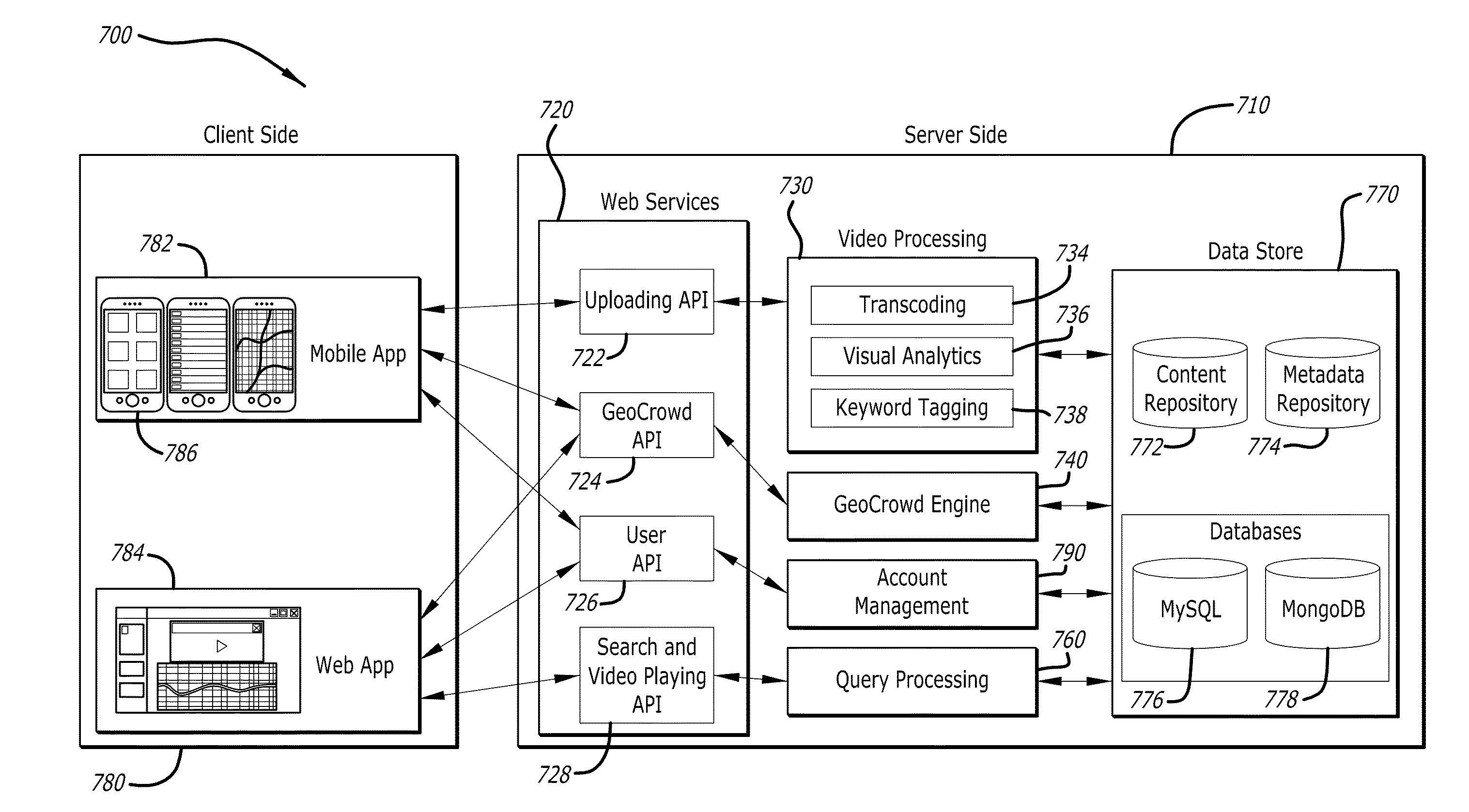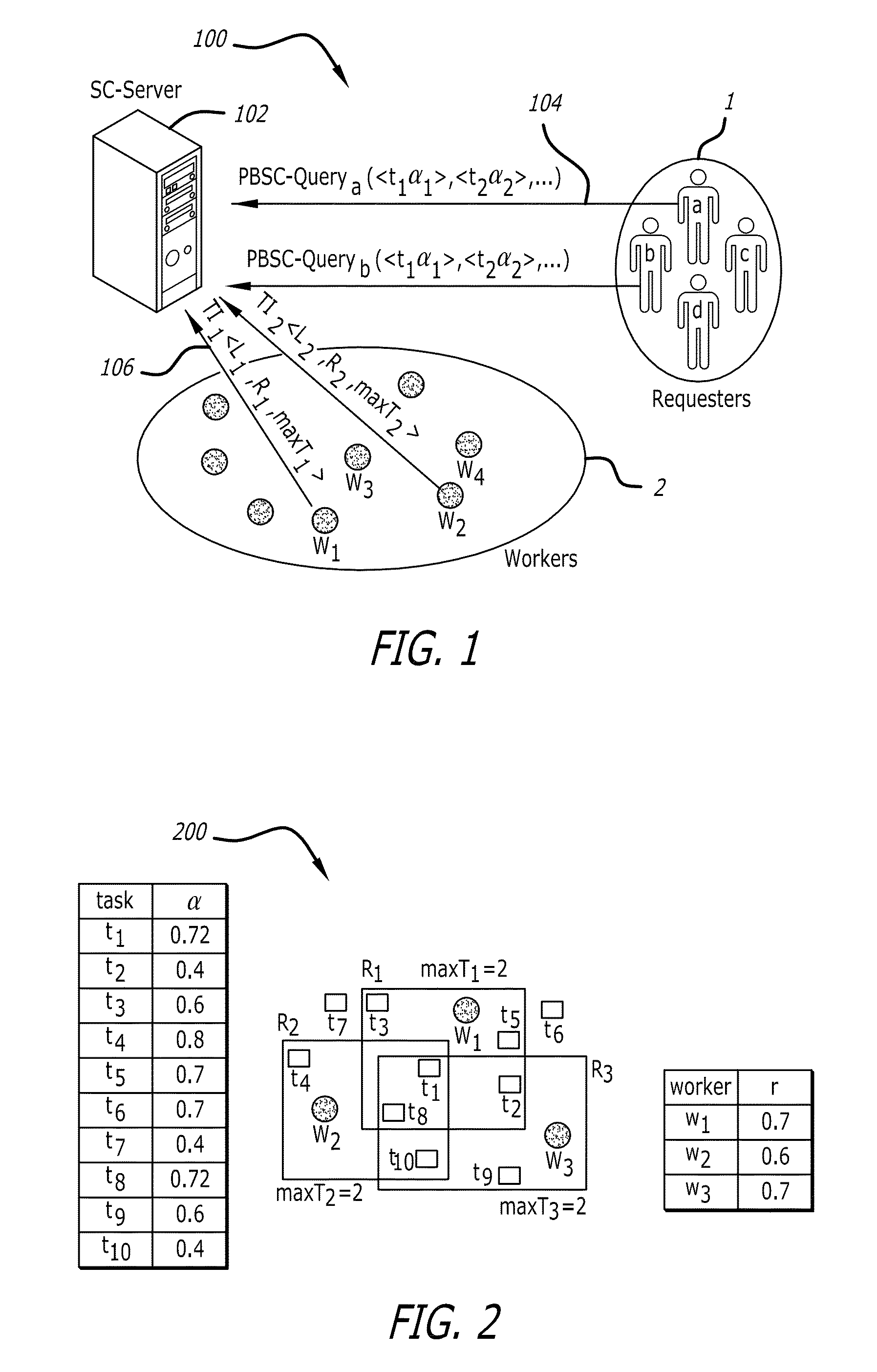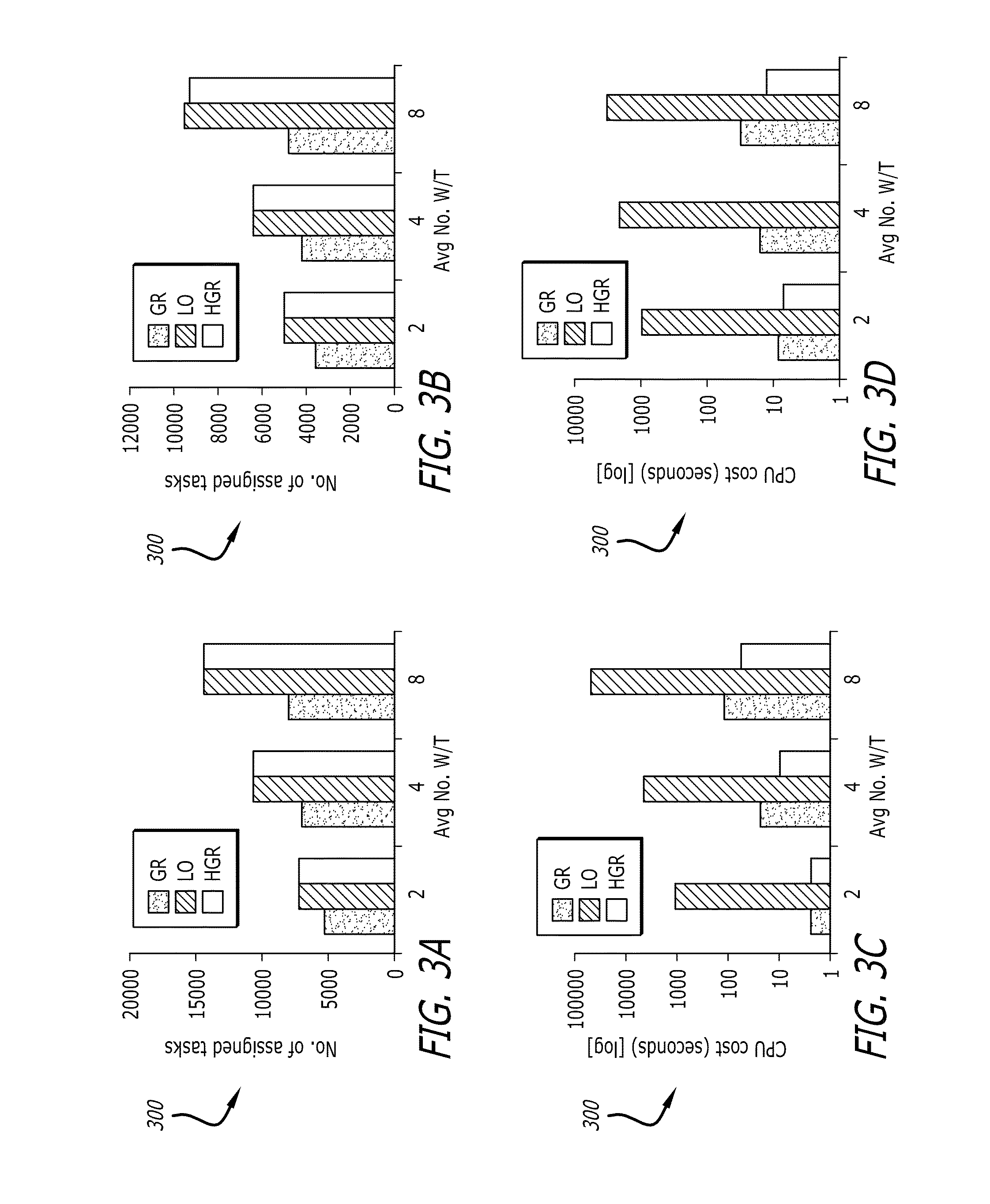Spatial crowdsourcing with trustworthy query answering
a crowdsourcing and query technology, applied in the field of data collection, can solve the problems of inability to always trust the tasks performed by workers, the difficulty the impossibility of achieving the effect of ensuring the accuracy of the query, so as to reduce the travel cost, improve the greedy approach, and efficiently improve the approximation
- Summary
- Abstract
- Description
- Claims
- Application Information
AI Technical Summary
Benefits of technology
Problems solved by technology
Method used
Image
Examples
case 1
[0159]FIGS. 15A-B illustrate two cases of FOV's results for range queries in views 15A-15B. Range queries are defined by a given circle, within which all the FOV's are found that overlap with the area of the circle. The resulting FOV f(p, θ, R, α) of the range circle query (q, r) with the center point q and radius r fall into the following two cases:[0160] As shown in FIG. 15A, the camera location is within the query circle, i.e., the distance between the camera location p and the query location q is less than the query radius r of the query circle.[0161]Case 2: As shown in FIG. 15B, although the camera location is outside of the query circle, the area of the FOV partially overlaps with the query circle. Specifically, line segment pp′ intersects with arc , which is formulated in Eqn. 3, where β represents the angle between vector {right arrow over (pq)} and {right arrow over (pp′)}, and p′ denotes any point on the arc of the FOV.
R≧Dist(p,q)×cos β−√{square root over (r2−(Dist(p,q)×s...
PUM
 Login to View More
Login to View More Abstract
Description
Claims
Application Information
 Login to View More
Login to View More - R&D
- Intellectual Property
- Life Sciences
- Materials
- Tech Scout
- Unparalleled Data Quality
- Higher Quality Content
- 60% Fewer Hallucinations
Browse by: Latest US Patents, China's latest patents, Technical Efficacy Thesaurus, Application Domain, Technology Topic, Popular Technical Reports.
© 2025 PatSnap. All rights reserved.Legal|Privacy policy|Modern Slavery Act Transparency Statement|Sitemap|About US| Contact US: help@patsnap.com



